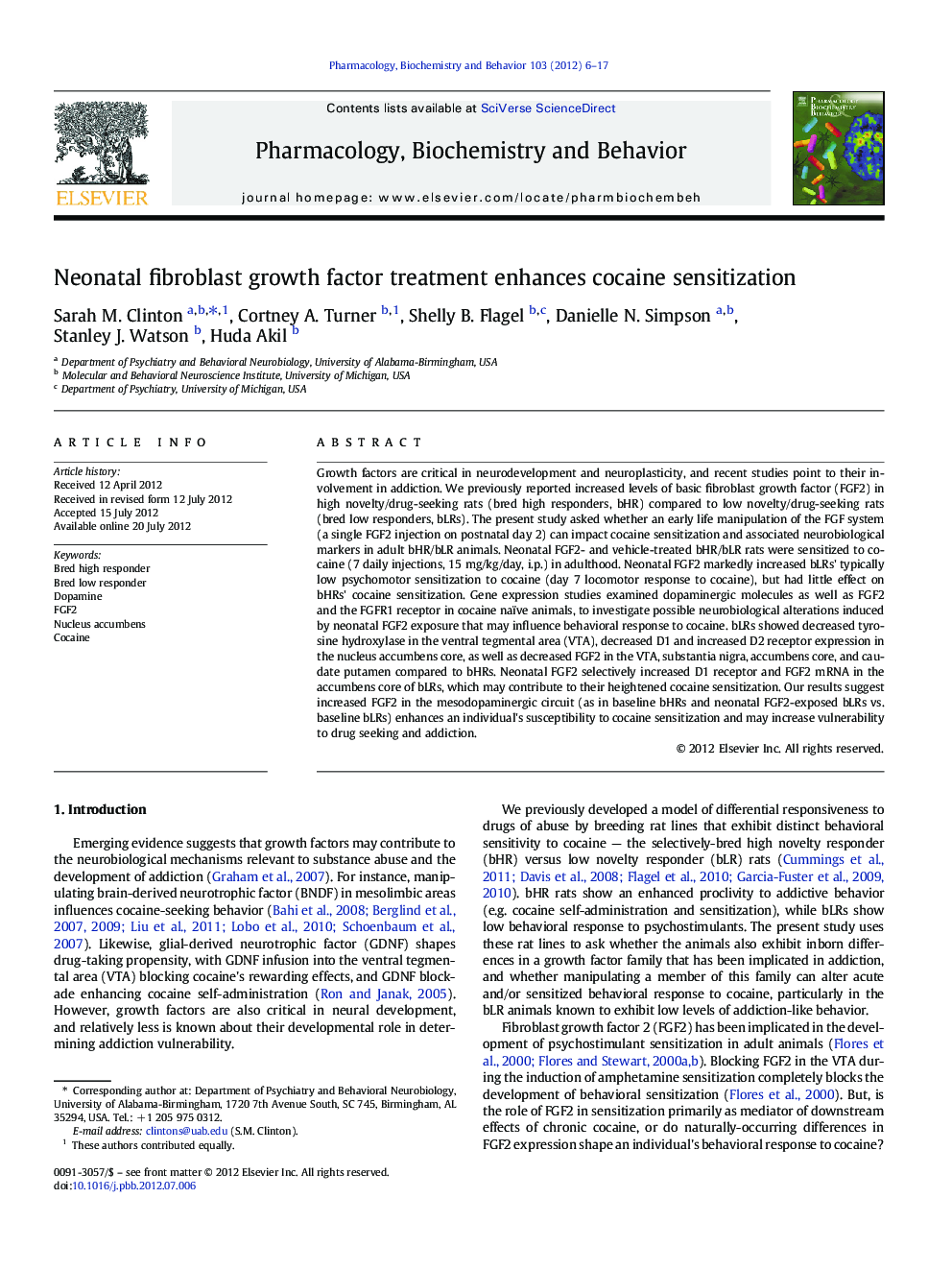| کد مقاله | کد نشریه | سال انتشار | مقاله انگلیسی | نسخه تمام متن |
|---|---|---|---|---|
| 2013066 | 1067084 | 2012 | 12 صفحه PDF | دانلود رایگان |

Growth factors are critical in neurodevelopment and neuroplasticity, and recent studies point to their involvement in addiction. We previously reported increased levels of basic fibroblast growth factor (FGF2) in high novelty/drug-seeking rats (bred high responders, bHR) compared to low novelty/drug-seeking rats (bred low responders, bLRs). The present study asked whether an early life manipulation of the FGF system (a single FGF2 injection on postnatal day 2) can impact cocaine sensitization and associated neurobiological markers in adult bHR/bLR animals. Neonatal FGF2- and vehicle-treated bHR/bLR rats were sensitized to cocaine (7 daily injections, 15 mg/kg/day, i.p.) in adulthood. Neonatal FGF2 markedly increased bLRs' typically low psychomotor sensitization to cocaine (day 7 locomotor response to cocaine), but had little effect on bHRs' cocaine sensitization. Gene expression studies examined dopaminergic molecules as well as FGF2 and the FGFR1 receptor in cocaine naïve animals, to investigate possible neurobiological alterations induced by neonatal FGF2 exposure that may influence behavioral response to cocaine. bLRs showed decreased tyrosine hydroxylase in the ventral tegmental area (VTA), decreased D1 and increased D2 receptor expression in the nucleus accumbens core, as well as decreased FGF2 in the VTA, substantia nigra, accumbens core, and caudate putamen compared to bHRs. Neonatal FGF2 selectively increased D1 receptor and FGF2 mRNA in the accumbens core of bLRs, which may contribute to their heightened cocaine sensitization. Our results suggest increased FGF2 in the mesodopaminergic circuit (as in baseline bHRs and neonatal FGF2-exposed bLRs vs. baseline bLRs) enhances an individual's susceptibility to cocaine sensitization and may increase vulnerability to drug seeking and addiction.
► Fibroblast growth factor 2 (FGF2) plays an important role in addictive behavior.
► Low (bLR) versus high (bHR) novelty-reactive rats exhibit marked FGF2 differences.
► bLR/bHR rats also exhibit marked differences in behavioral response to cocaine.
► Early life manipulation of bLRs' FGF system increases their cocaine reactivity.
► Neonatal FGF2 elevates bLR dopamine receptor and FGF2 levels in nucleus accumbens.
Journal: Pharmacology Biochemistry and Behavior - Volume 103, Issue 1, November 2012, Pages 6–17